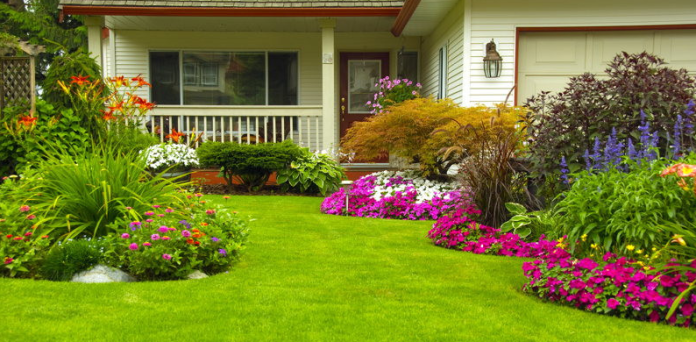Table of Contents:
- Introduction to Landscaping
- Understanding the Basics of Landscape Design
- The Role of Plant Selection in Landscaping
- Hardscaping: More Than Just Stone and Concrete
- Sustainability in Modern Landscaping
- The Impact of Seasonal Changes
- Landscaping Tips for Small Yards
- Future Trends in Landscaping Design
Introduction to Landscaping
At its core, landscaping is about enhancing an area’s natural beauty. It involves crafting a visually pleasing outdoor environment through the strategic use of plants, terrain shaping, and aesthetics, all harmonized with the surrounding environment. The blend of artistry and scientific planning ensures a beautiful and practical landscaped area. Professionals often consider the local ecosystem, weather patterns, and the cultural significance of plant and design choices, guaranteeing that landscapes serve private and communal purposes.
Understanding the Basics of Landscape Design
A well-designed landscape balances form and function. Elements such as color, texture, and balance come into play, creating a cohesive space. Color scheming and selecting complementary plant varieties can elevate a simple garden into an exquisite retreat. Design principles like unity, scale, and focalization guide landscapers in blending outdoor features harmoniously while allowing for personal expression and creativity. Each design aspect must align with the intended use of the space, whether for leisure, entertainment, privacy, or public view. In many cases, landscaping services are engaged to ensure these design goals are executed effectively and tailored to the property’s specific needs. These services often include site analysis, plant selection, and long-term maintenance planning to support aesthetic and functional outcomes.
The Role of Plant Selection in Landscaping
Plants are the heart of any landscape design. The proper selection can transform a bare yard into a lush sanctuary. When choosing plants, consider climate, soil type, and growth patterns. Native plants often thrive better and require less maintenance because they are adapted to local environmental conditions, thus reducing additional resource consumption. Thoughtful plant selection also contributes to biodiversity’s preeminence, attracting wildlife and supporting local ecosystems.
Hardscaping: More Than Just Stone and Concrete
Hardscaping adds structure and functionality to garden designs. It includes paths, patios, and retaining walls that complement the living elements of a landscape. Innovative design elements like water features, pergolas, and fire pits can further enhance the ambiance of a garden. Thoughtful integration of hardscape elements boosts practical usability and introduces a sense of order and rhythm into outdoor spaces. Many landscaping companies offer hardscaping as part of their overall services, often working closely with clients to ensure that built features align with both aesthetic goals and site-specific requirements.
Sustainability in Modern Landscaping
Today’s landscapes are not only beautiful but also sustainable. Employing eco-friendly techniques such as rainwater harvesting, xeriscaping, and permeable pavements helps conserve resources and protect the environment. These practices are essential in countering the environmental challenges posed by climate change. Incorporating native and drought-resistant plants contributes to sustainability by requiring minimal watering.
The Impact of Seasonal Changes
Landscapes evolve with the seasons. This means that specific plants will bloom at certain times of the year, changing the overall appearance and feel of the space. Designing with these changes in mind ensures a garden remains vibrant throughout the year. Strategic plant selection and layout can provide year-round narratives for each season, weaving a story with the hues of spring flowers, summer lushness, autumn foliage palette, and stark winter beauty.
Landscaping Tips for Small Yards
Limited space doesn’t mean limited potential. Vertical gardening and multi-functional plants can maximize a small yard’s impact. Employing layers and levels can create depth, tricking the eye into perceiving a larger space than is available. Artful use of structures like trellises and wall planters optimizes growth spaces, while mirrors and clever use of light can brighten and expand the perceived area of compact gardens.
Future Trends in Landscaping Design
As with any field, landscaping evolves. New trends include incorporating technology, such as innovative irrigation systems that adjust water usage based on weather forecasts and soil moisture, and minimalist designs that focus on sleek lines and fewer, more impactful elements. These innovative trends also embrace sustainability by prioritizing ecological resilience amidst environmental changes, setting a foundation for future-ready landscapes. The future promises to push the boundaries and expectations of what modern outdoor spaces can achieve, delivering more personalized access to nature’s wonders.




